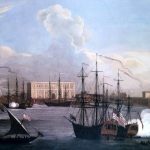
Louis Icart, a master of Art Deco and a prominent figure in the world of 20th-century French art, emerged from humble beginnings to become one of the most celebrated and sought-after artists of his time. Born on December 9, 1888, in Toulouse, France, Icart’s journey began against the backdrop of the Belle Époque, a period that witnessed the flourishing of artistic and cultural movements.
Growing up in Toulouse, Icart exhibited an early aptitude for drawing. His artistic inclinations were encouraged by his family, and at the age of fifteen, he enrolled at the École des Beaux-Arts in Toulouse. This marked the beginning of his formal artistic education, where he studied under the guidance of Eugène Vidal and François Flameng.
Icart’s move to Paris in 1907 proved to be a pivotal moment in his life and career. The city, a thriving hub of artistic innovation and cultural vibrancy, provided the ideal environment for the young artist to immerse himself in the burgeoning Art Nouveau movement. Icart’s early works reflected the influence of this style, characterized by flowing lines, organic motifs, and a departure from academic traditions.
Art Deco Ascendance
The transition to the Art Deco style marked a defining phase in Louis Icart’s career. With its emphasis on elegance, luxury, and modernity, Art Deco resonated with the zeitgeist of the Roaring Twenties. Icart’s artistic evolution aligned seamlessly with the emergence of this influential movement.

By the 1920s, Icart had established himself as a leading figure in the world of printmaking, particularly known for his exquisite etchings and aquatints. His work often depicted the glamorous and sophisticated life of the Jazz Age, featuring scenes of stylish women, romantic couples, and decadent settings. Icart’s attention to detail, coupled with his ability to capture the essence of the era, catapulted him to international acclaim.
One of Icart’s iconic series from this period is “Les Vingt-quatre Heures du Mans” (1925), a collection of illustrations celebrating the famous 24 Hours of Le Mans race. The series showcased Icart’s mastery of composition, dynamic lines, and a keen sense of narrative, demonstrating his ability to elevate everyday scenes to the status of timeless art.
As his reputation soared, Icart’s work became highly sought after by collectors and art enthusiasts worldwide. His prints, often featuring alluring women in fashionable attire, captured the allure of a bygone era, creating a visual legacy that resonates with the glamour and sophistication of the early 20th century.
Global Recognition
Louis Icart’s success extended beyond the realm of printmaking to encompass various artistic endeavors. In addition to his etchings and aquatints, Icart ventured into painting, sculpture, and even designed theatrical costumes and sets. His versatility as an artist contributed to the breadth of his influence, and his work became synonymous with the Art Deco movement.

The global recognition of Icart’s talent was solidified through exhibitions in major cities, including Paris, London, and New York. His prints adorned the walls of esteemed galleries, and his artistic vision found resonance in the hearts of collectors. Icart’s popularity extended to the United States, where he gained a dedicated following, particularly during the interwar period.
Despite the challenges posed by economic downturns and political upheavals, Icart’s commitment to his craft remained unwavering. His later works reflected a continued exploration of themes such as mythology, fantasy, and classical subjects. The evolution of his style demonstrated an artist unafraid to adapt and experiment, showcasing a range that transcended the confines of a singular artistic movement.
Louis Icart’s lasting legacy is evident in the continued demand for his works in the contemporary art market. His prints, paintings, and sculptures are held in prestigious collections, including the Metropolitan Museum of Art in New York and the Victoria and Albert Museum in London. The enduring appeal of Icart’s art lies in its ability to evoke a sense of nostalgia for a bygone era while remaining timeless in its beauty and craftsmanship.

In recognition of his significant contributions to the world of art, Icart was awarded the Legion of Honor in France. His impact on the Art Deco movement endures as a testament to his ability to capture the spirit of an era through his distinctive style and masterful craftsmanship. Louis Icart’s journey from the artistic circles of Toulouse to international acclaim stands as a remarkable chapter in the annals of 20th-century art history.




